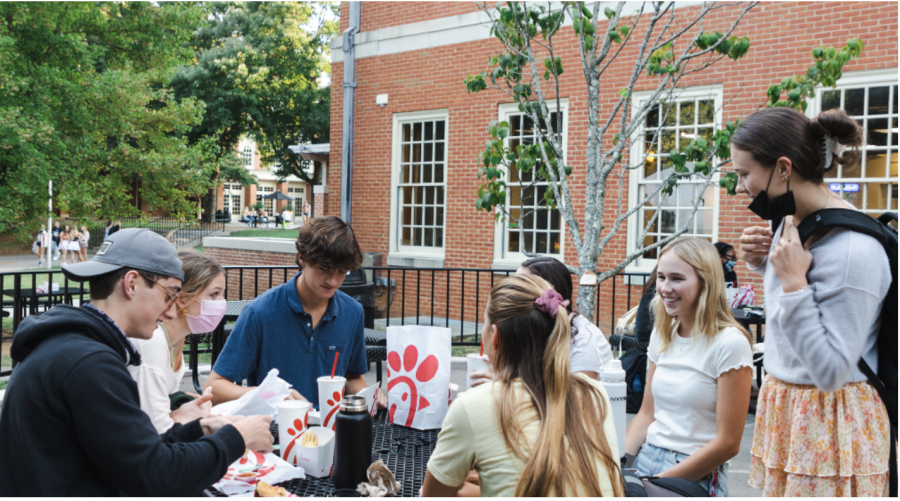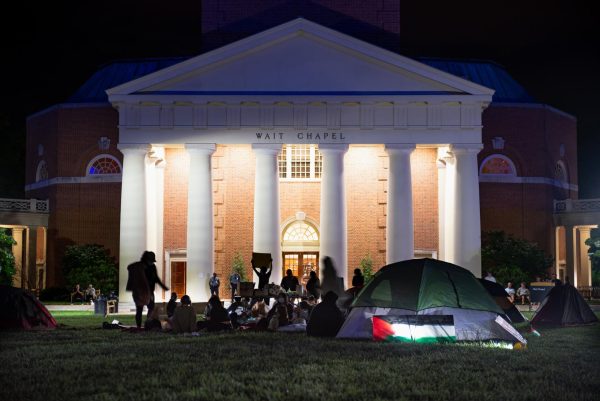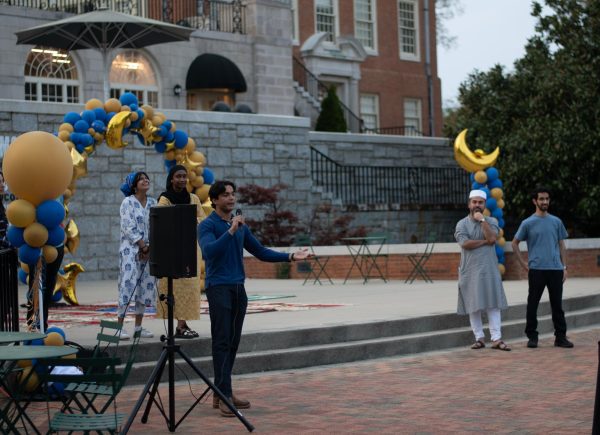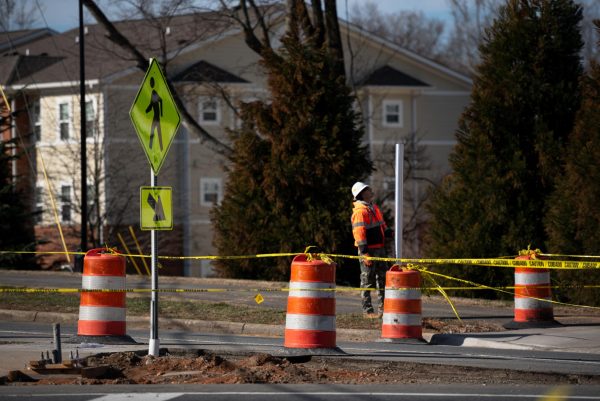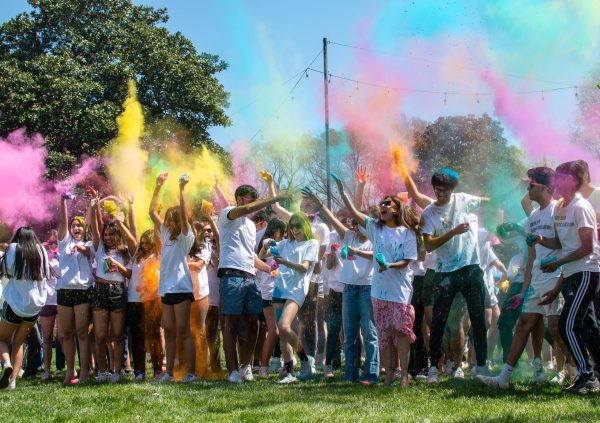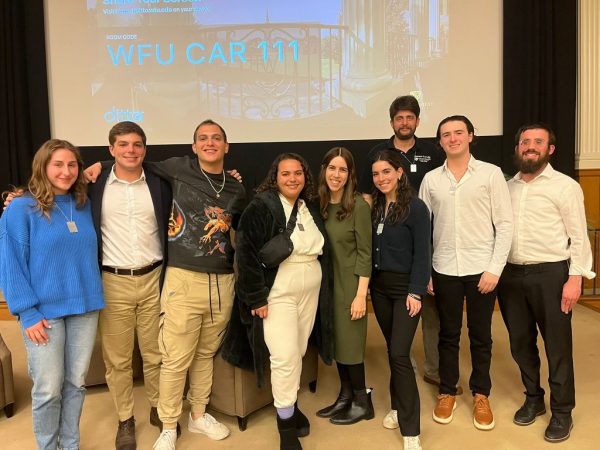Mask enforcement relies on students
Inconsistent mask enforcement results in students having to self-regulate, with varying success
This school year, students must take their own precaution when it comes to wearing masks due to lack of enforcement.
September 30, 2021
Students are sighing in relief. For the first time in over a year, the Pit looks normal.
Groups of students squeeze through the double doors laughing about last weekend. Classmates sit in the corner booths, eyebrows raised in disbelief over their upcoming assignments. Friends bring back armfuls of cups to a four-person table where nine are sitting.
Best of all, no one is telling them not to.
After semesters of being told to ‘mask-up’ and stay six feet apart, particularly indoors, students smile at each other walking by and are surrounded by their friends again. However, Wake Forest University’s health policy still mandates that masks be worn inside in accordance with Center for Disease Control (CDC) guidelines and is relying on students to self-enforce this policy.
“When you go in and out of your classes in hallways and through lobbies, please help us by gently and cheerfully reminding your fellow students to wear masks indoors so that we can keep everyone healthy and safe,” said Special Assistant to the Vice President Marybeth Wallace in an email to President’s Aides.
“When you go in and out of your classes in hallways and through lobbies, please help us by gently and cheerfully reminding your fellow students to wear masks indoors so that we can keep everyone healthy and safe,” Special Assistant to the Vice President Marybeth Wallace said in an email to President’s Aides.
As opposed to relying on the mask-policy enforcers who roamed the campus last semester and the real threat of suspensions and conduct hearings for not abiding by policies, Wake Forest is shifting its approach, having students monitor both themselves and their peers with regards to following guidelines.
Students’ willingness to enforce this policy in exchange for giving up their rediscovered freedoms appears to be in short supply, though.
“When you walk in the Pit there are signs to wear masks and to not move the chairs,” freshman Riley Brennan said. “No one cares though because no one actually enforces it.”
Brennan also said that mask policies around eating, in general, are a gray area, leaving students feeling comfortable to do as they please in the Pit.
The policy of the dining service providers is just as lax as that of the Wake Forest Administration.
“You’re supposed to wear one,” first-year Pit employee Quintoria Rucker said as she scanned in a group of students, some masked, others not. “But we can’t tell you to, there’s nothing we can do about it.”
While masks are available in the Pit, most students choose not to wear one, Rucker said.
The effectiveness of the self-enforcement directive is hard to discern. Since Aug. 1, there have been a total of 115 confirmed positive COVID-19 cases on campus amongst students, faculty and staff, according to Wake Forest’s COVID-19 Dashboard.
Even amidst increasing cases on campus, administrators remain optimistic.
“I met with Dean Michele Gillespie last week and the school seems to think that the move to self-enforcement has been effective,” senior Ashwin Singh said. “It’s clear that the administration wants very little to do with enforcing mask policy itself, though.”
Since COVID-19 restrictions have been relaxed both at Wake Forest and around the country, there have been challenges in balancing the enforcement of the guidelines that do remain and the desire to return to normalcy.
“I need your help,” Dean Gillespie wrote in an email to President’s Aides. “The college needs your help. There is nothing as powerful for changing social behavior as peer pressure.”
Dean Gillespie’s message is resting on a waning impetus for social change though, and the lack of consistent enforcement has left students wondering why the policy remains in place in dining areas at all.
“We’re 97 percent vaccinated,” senior Eliot Leadem said, citing an email sent by President Susan Wente at the beginning of the semester regarding student vaccination rates. “I understand why the mask policy exists in classrooms, where you can’t choose who you’re around. But everywhere else I can make my own judgments.”
The hundreds of maskless students in the Pit during peak hours indicate that Leadem is not the only student who feels this way.
Self-enforcement may be a viable solution for now, but student apathy for the directive leaves questions as to whether the policy is productive or necessary.
While there have not been mentions of any potential changes to Wake Forest’s operating status, the CDC warns that the threat of breakthrough infections in vaccinated populations still looms.


